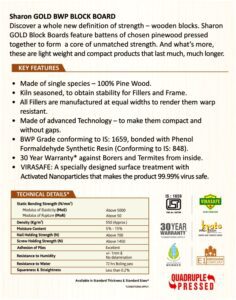
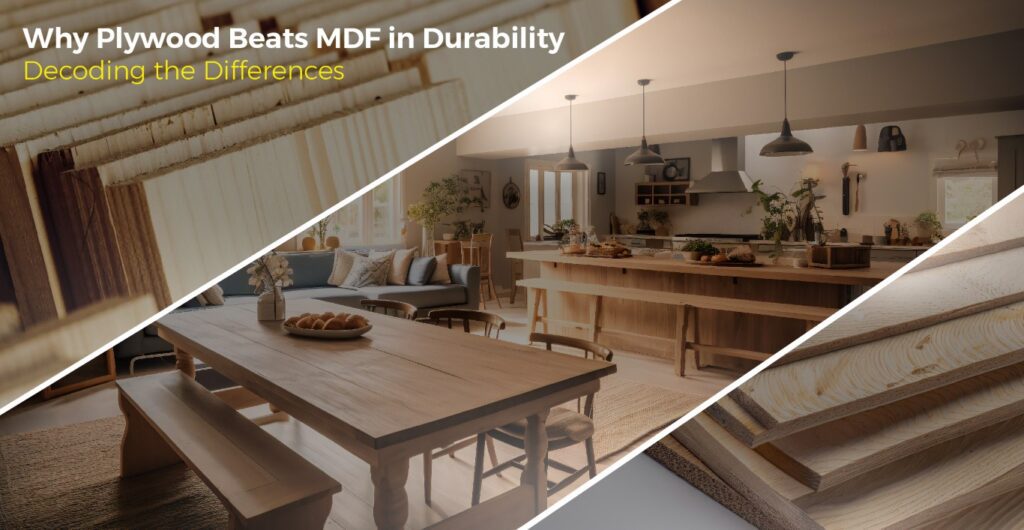
When it comes to selecting the right material for furniture and cabinetry, the choice between plywood and MDF (Medium Density Fibreboard) often comes up. While both materials have their place in woodworking, plywood often stands out due to its superior durability. generally, post will explore the differences between plywood and MDF, focusing on why plywood is generally more durable and a better choice for various applications.
Plywood is an engineered wood product consisting of thin wood veneer “plies” that are glued together, with the wood grain of the neighbouring layers rotated up to ninety degrees from one another. This cross-graining technique gives plywood its strength and durability. Plywood is available in various grades and thicknesses, making it a versatile material for a wide range of applications, from structural support to fine furniture making.
MDF or Medium Density Fibreboard, is also an engineered wood product, but it’s made from wood fibres rather than veneers. To create dense, flat panels, these fibres are mixed with binders such as wax and resin and heated to high pressure. MDF is known for its smooth surface and ease of painting, making it a popular choice for interior applications like cabinetry and shelving.
The primary difference between plywood and MDF lies in their composition. Plywood’s layers of wood veneer create a sturdy, layered structure that resists warping and splitting. In contrast, MDF’s wood fibre composition results in a denser but more uniform and less strong material.
Plywood’s cross-grain construction provides excellent strength and durability, making it less prone to damage from impacts, heavy loads and regular wear and tear. MDF, while dense, is more susceptible to cracking and breaking under pressure due to its homogeneous composition. This makes plywood a preferred choice for applications where durability is critical, such as flooring, structural panels and furniture.
Plywood generally has better moisture resistance compared to MDF. The layers of veneer in plywood, when properly sealed, can withstand exposure to moisture and humidity better than MDF, which tends to absorb water and swell. This property makes plywood suitable for use in areas with high humidity, like kitchens and bathrooms.
MDF is denser and heavier than plywood, which can be both an advantage and a disadvantage. While its weight can provide stability for certain applications, it can also make MDF more challenging to handle and install. As plywood is lighter than other materials, it is particularly easy to work with and carry for do-it-yourself tasks.
Both materials are relatively easy to work with, but they have different characteristics. MDF is perfect for detailed designs and painted finishes because of its homogeneity, which makes it possible to cut and shape it without worrying about splinters. Plywood, on the other hand, can splinter along the edges if not handled properly, but its strength makes it better suited for structural projects.
Cost is another factor to consider. MDF is a desirable alternative for tasks on a tight budget because it is usually less expensive than plywood. However, the long-term durability and performance of plywood often justify the higher initial cost, especially for applications where strength and longevity are essential.
Plywood’s strength makes it ideal for structural uses such as subfloors, roofing and wall sheathing. Its ability to withstand heavy loads and resist impact makes it a reliable choice for these critical applications.
For high-quality furniture that needs to last, plywood is often preferred. Its ability to hold screws and other fasteners securely, coupled with its resistance to warping and cracking, ensures that furniture pieces remain sturdy over time.
In kitchen and bathroom cabinetry, where exposure to moisture is common, plywood’s moisture resistance gives it an edge over MDF. Cabinets made from plywood are less likely to suffer from swelling and deterioration.
Plywood’s durability and resistance to the elements make it suitable for outdoor furniture, sheds and other structures exposed to weather conditions. MDF, on the other hand, is not recommended for outdoor use due to its poor moisture resistance.
When it comes to environmental impact, both plywood and MDF have their pros and cons. Plywood production typically uses less formaldehyde-based adhesives compared to MDF, which can be a consideration for indoor air quality. Additionally, plywood can be made from sustainably harvested wood, contributing to more responsible forestry practices.
MDF, however, often makes use of wood waste and recycled fibres, which can be seen as an environmentally friendly practice. However, the resins used in MDF production may off-gas formaldehyde, a potential health concern. It’s important to look for low-emission products and certifications such as CARB (California Air Resources Board) compliance when selecting MDF.
In the debate between plywood and MDF, plywood often comes out on top in terms of durability, strength and versatility. Its layered construction, resistance to moisture and ability to withstand heavy loads make it an ideal choice for a wide range of applications, from structural components to fine furniture. While MDF has its place, particularly in applications requiring a smooth, paintable surface, the long-term benefits of plywood often outweigh its higher cost.
By understanding the key differences between these materials, you can make an informed decision that meets the specific needs of your project. Whether you’re building a sturdy piece of furniture, renovating a kitchen or constructing a new home, plywood’s durability and resilience ensure it will stand the test of time. For those seeking high-quality plywood products, SharonPly offers a range of options that combine strength, durability and reliability.

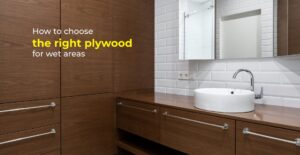
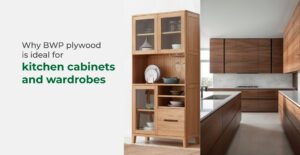
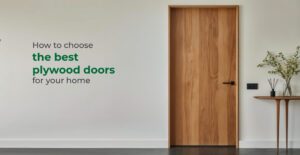

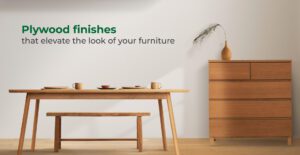




Users understand that SHARONPLY is committed to protecting the User’s privacy and shall take all efforts to protect any personal data provided to the Website by reasonable security safeguards against such risks as loss or unauthorised use, destruction, modification or disclosure of data, However, in case of any lapse, SHARONPLY shall not be held responsible for any effect or consequences thereof. The Website uses cookies to track usage of the path of the User. Since most web browsers automatically accept cookies, User can edit User’s browser options to block them if User does not want the Website to use cookies to track usage of the path of the User.
SHARONPLY undertakes not to disclose, except as otherwise provided, the personal information provided by the User to any person, unless such action is necessary to: –
By filling up any form on the Website User automatically grants SHARONPLY a royalty-free, perpetual, irrevocable non-exclusive license to use, reproduce, publish, edit, distribute, and publicly display the information given in the form and to sublicense such rights.
Any queries regarding the SHARONPLY’s privacy policy, may be sent to admin@sharonply.com.
